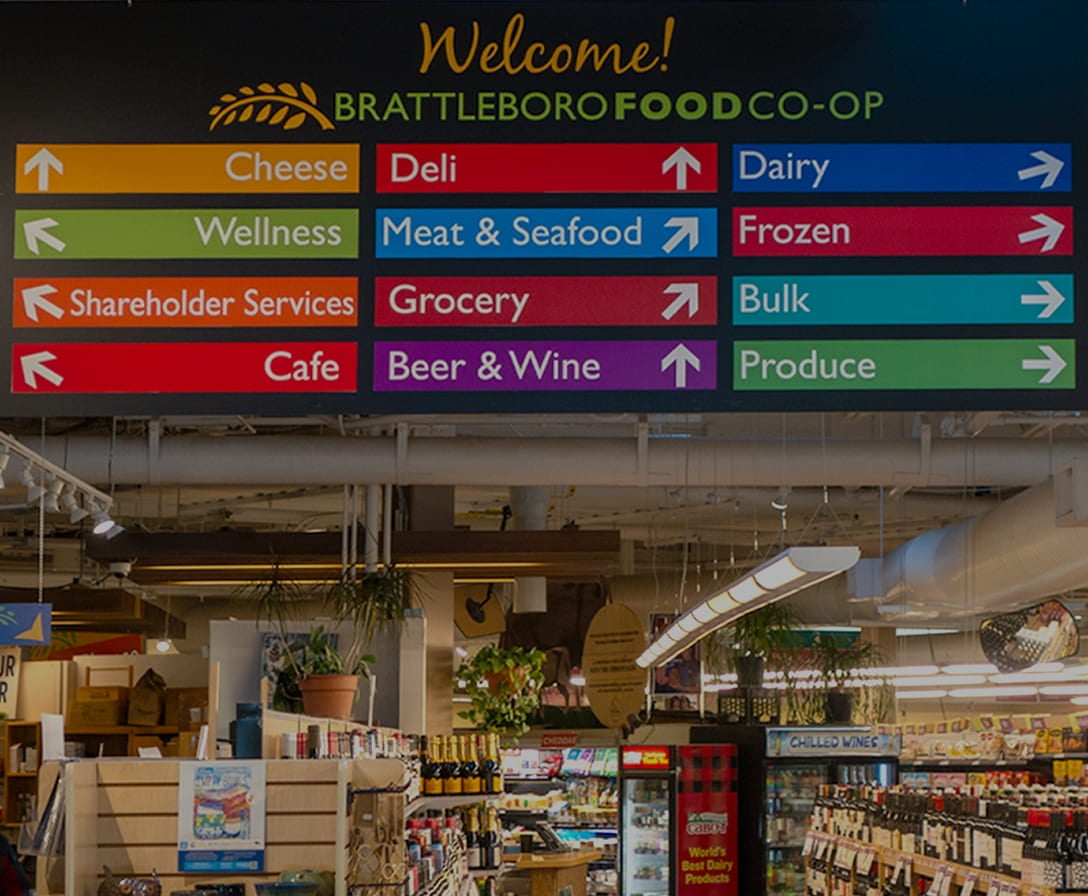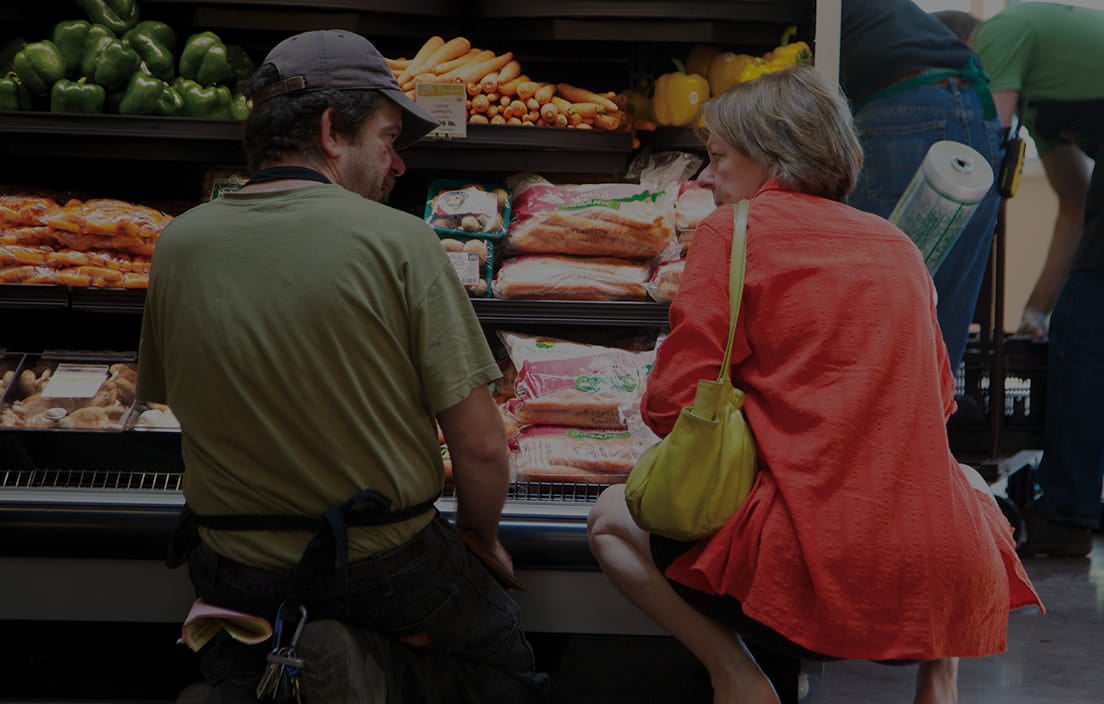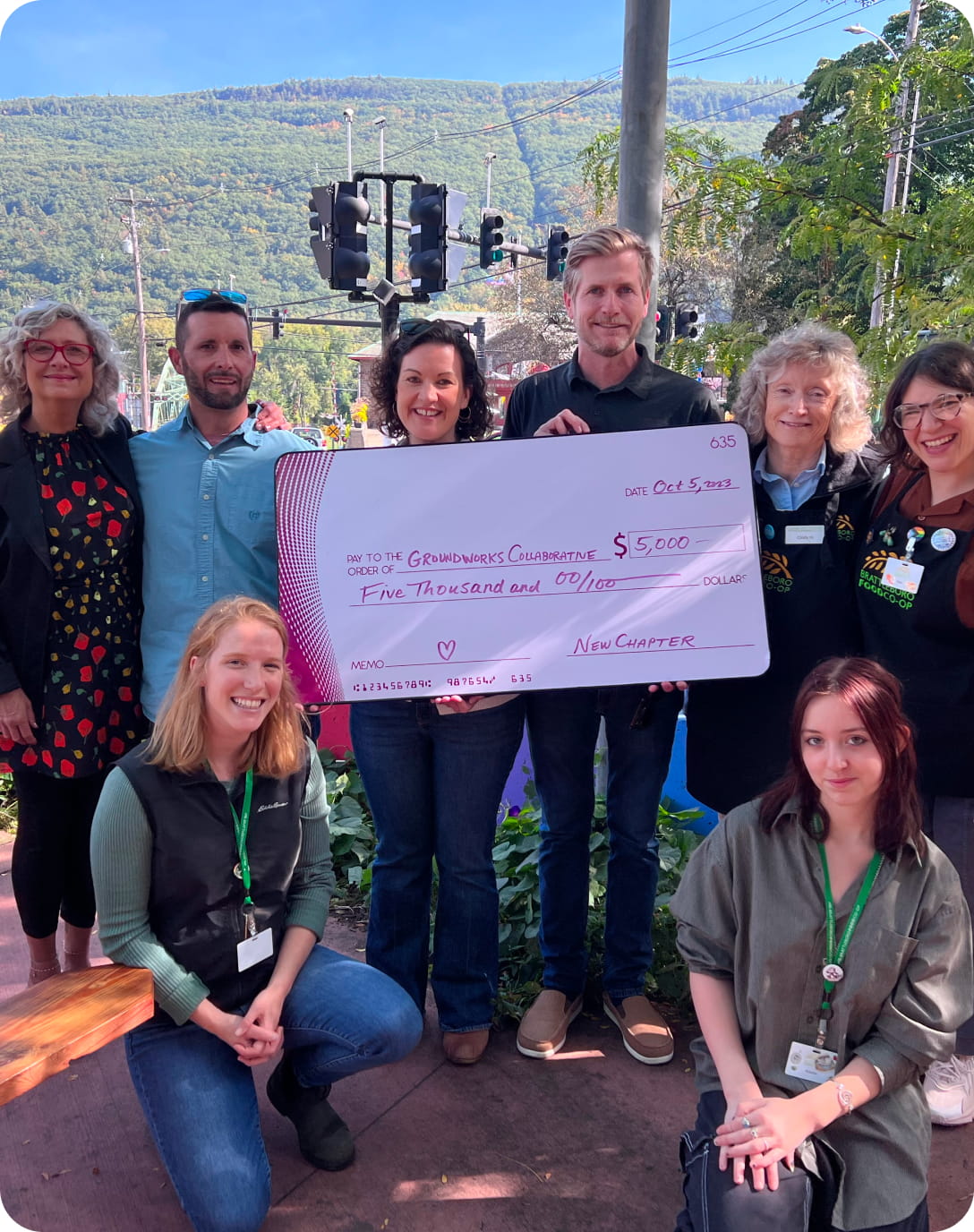Measuring Impact, Part Two
At the turn of the millennium, the leadership of our Co-op, both on the board and on the management team, worked on understanding where our business could make changes in order to not only reduce its footprint, but actually to work towards becoming “a regenerative business that has a net positive environmental impact.” This became our fourth Ends policy. We have reported on the sales of local products in our store, which—due to how much of it we sell—clearly has some effect on our overall impact. These products clearly burn less energy to get to us, compared to products “from away.” But in addition, we have been working hard on improving our waste-stream impact, both behind the scenes and, with your help, in our store practices. You may remember that we established a Waste Stream Task Force in our store, made up of folks from nearly every department to research, analyze, and problem-solve ways to improve our performance.
So look at what we’ve done! In fiscal year (FY) 2016, the Co-op generated 186.7 tons of waste against sales of $19.9 million. In FY 2017, while our sales increased to $20.5 million, our total waste went down to 175.8 tons.

Prior to FY17, our landfill diversion rate (which represents the percentage of our total waste stream kept out of the landfill through either recycling or composting) hovered around 60% for years. But in FY17, our diversion rate rose to 73% through the combined efforts of all staff, particularly the Waste Stream Task Force, the Maintenance crew, the Kitchen, Deli, and the Grocery departments. We are now recycling pallet wrap, composting paper towels in the bathrooms, and paying much closer attention overall to fine-tuning our recycling and composting efforts.
Meanwhile, utility rates for both the main store and Dottie’s rose slightly to $10.93 per square foot, up 0.24 a foot from last year. Some of this was due to higher electricity rates. Our solar array on the roof generated 31,370 kilowatts, roughly the same as the prior year. Perhaps you weren’t aware that we had a solar array on the roof; it is nearly impossible to see. We hope to link it into a visual screen sometime during this coming year to let you know how much power is being generated.




“Yes, but… the plastic clamshells in Bulk!” I can hear some of you say. It’s true; we can’t effectively move the needle if we don’t look at reducing all packaging that we ourselves introduce onto the shelves. From the perspective of waste, we have much more to do, and some of our practices seemingly fly in the face of these efforts. Yet, as with most things, we balance so many goals in thinking through our solutions. We have food safety considerations that make a few earth-friendly solutions impossible. We have to watch our expenses carefully, so we have to balance potential labor costs with some options, and some options that don’t impact landfills do impact utility use. As we continue to examine our practices, we will look at instituting changes that continue to improve our overall performance. Please be patient with us as we work through these ideas—some of them may not make sense initially, and some of them will change yet again down the road as “greener” options become available and more economical. In the meantime, know that our metrics show very real progress in reducing our footprint, and be proud of that small victory. Thank you for all your feedback and support!



 By Sabine Rhyne, General Manager
By Sabine Rhyne, General Manager
About Producer of The Month

Shop Online

On Sale Now!

